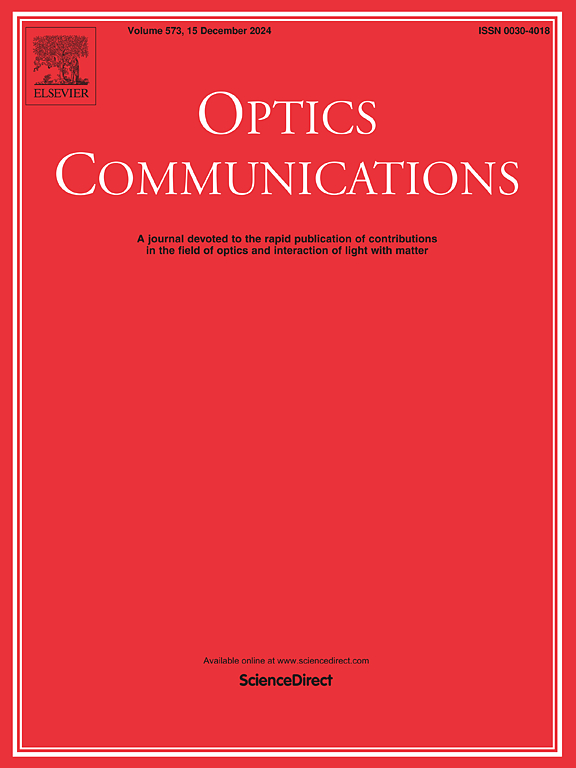Ultraviolet optical spanner with focused vortex metalens
IF 2.2
3区 物理与天体物理
Q2 OPTICS
引用次数: 0
Abstract
The miniaturized integrated ultraviolet (UV) optical spanner (OS) plays a crucial role in attaining both high resolution and precise control. In this study, we propose an UV OS scheme with focused vortex metalens. Employing this approach, we have designed a UV metalens with a numerical aperture (NA) of 1.1. Optical forces acting on particles within the focused spiral ring and the trapping potential were computed using the finite-difference time-domain (FDTD) method. Our designed metalens effectively trapped SiO2 particles with a 60 nm radius within the optical vortex (OV) ring. The maximum optical forces acting on the SiO2 particles were 3.45 pN W−1, 3.45 pN W−1, and 1.1 pN W−1 in the x, y, and z-directions, respectively. Furthermore, we examined the correlation between the optical forces exerted by the OS and particle diameter, particle refractive index, as well as incident power. We also discussed the correlations between azimuthal force, rotational velocity, and torque with changes in topological charge. These findings present innovative technical solutions for the precise manipulation of viral particles and nanoparticles.
求助全文
约1分钟内获得全文
求助全文
来源期刊

Optics Communications
物理-光学
CiteScore
5.10
自引率
8.30%
发文量
681
审稿时长
38 days
期刊介绍:
Optics Communications invites original and timely contributions containing new results in various fields of optics and photonics. The journal considers theoretical and experimental research in areas ranging from the fundamental properties of light to technological applications. Topics covered include classical and quantum optics, optical physics and light-matter interactions, lasers, imaging, guided-wave optics and optical information processing. Manuscripts should offer clear evidence of novelty and significance. Papers concentrating on mathematical and computational issues, with limited connection to optics, are not suitable for publication in the Journal. Similarly, small technical advances, or papers concerned only with engineering applications or issues of materials science fall outside the journal scope.
 求助内容:
求助内容: 应助结果提醒方式:
应助结果提醒方式:


